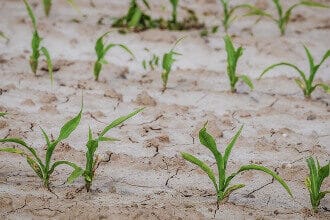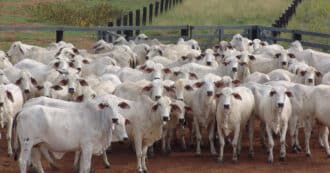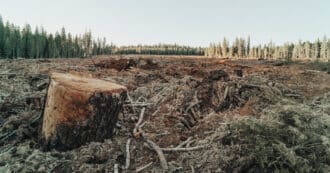By Harry Cooper – Forests are some of the most important ecosystems on the planet. They are home to an abundance of biodiversity, with many species that we haven’t even discovered yet. These havens of life are stunningly beautiful, and support ecologically healthy environments. But the importance of forests goes beyond the local level as the forests of the world play an important role in many global systems, including the global water cycle.
The Global Impact of Forests
Trees are incredibly efficient at moving water; their roots suck up water from the ground and release it through a process called transpiration as water vapor into the air. With millions of trees transpiring water every day, the process has considerable global impacts.
This water vapor cools the air around the trees, helping to mitigate climate change, and create cooler temperatures around the globe. This water vapor is also incredibly important for forming rain clouds. Many inland areas especially rely on trees and transpiration for consistent rainfall.
However, as more and more trees are cut down every day, the contributions forests make to the global water cycles are becoming increasingly disrupted. Deforestation not only has devastating environmental impacts locally, but it is also causing major shifts in global water distribution, creating massive droughts and leaving many without water.
The Problem Of Deforestation
Many people don’t realize just how extensive deforestation is. While 30% of the Earth’s land area is still covered by forests, the rate at which trees are being cut down is still alarmingly high. It is important to understand just how bad the problem of deforestation is in order to understand the extent to which it is affecting global water cycles.
How Bad is Deforestation?
It is estimated that around 80,000 acres of forest are cut down on a daily basis: that’s around 125 sq miles or 324 sq km. Since 1990, this has resulted in 420 million hectares of forest being lost, and 17% of the Amazon Rainforest disappearing. These forests are primarily being cut down by the logging industry, wildfires, and to clear land for agricultural development.
The Importance Of Transpiration
Like all plants, tree roots tap moisture from the ground and release it from their leaves as water vapor through a process called transpiration. The effects of transpiration are usually minimal, but when enough trees are concentrated in a large area, transpiration can release enough water vapor to form clouds that have an effect on rainfall which, in turn, affects the water cycle.
Transpiration In The Amazon
This process of rainfall from local transpiration can especially be seen in the largest rainforest on Earth, the Amazon. It is estimated that around 20% of the Amazon rainforest’s rainfall on average has been transpired at least once, and around half of that 20% of rainfall has transpired and rained in the Amazon rainforest multiple times, anywhere from 2-7 times.
Effects On Global Water Cycles
The effects of transpiration in massive forests and major tropical forest zones such as the Amazon are not just felt locally in the Amazon basin, but across the entire western hemisphere. With the Amazon rainforest producing around 20 billion tons of water in transpiration per day, the Amazon is able to create rainfall hundreds of miles away.
This rainfall is a critical part of the agriculture and ecology of regions across the entire hemisphere. Paraguay, Uruguay, and northern Argentina are considered the breadbasket of South America and are incredibly agriculturally productive. This production is largely dependent or predictable rainfall caused by transpiration in the Amazon basin. Not to mention that it also provides water for urban centers across South America.
Transpiration from the Amazon even reaches as far as North America. The farms of the American Midwest rely on rainfall that originated from tropical forests in the Amazon. It is estimated that nearly 50% of all rainfall in the Midwest originates from inland transpiration.
The Impact Of Deforestation
With transpiration playing such an important role in the global water cycle, deforestation poses a substantial risk to water sheds everywhere. This is not just limited to the Amazon in the Americas; places all around the world are having their water cycles impacted by deforestation.
Deforestation in West Africa is depleting rain fall over the Ethiopian highlands where the Nile originates, threatening to dry up the famous river. Deforestation in China is not just drying up its own agricultural lands, but is having impacts as far as Eastern Europe and Southeast Asia.
Inland regions are especially reliant on transpiration rainfall, and are therefore more prone to the effects of deforestation on the water cycle. And with deforestation continuing every day, many parts of the world are seeing less and less rainfall.
It is estimated that the Amazon rainforest needs about 80% of its total forest cover to be able to transpire enough water to continue its critical hydrological function. And with approximately only 81% of the Amazon still intact, the Americas, as well as many other parts of the world, will soon be in big trouble.
Deforestation And Climate Change
Another impact deforestation has on global water cycles is through its contribution to climate change. The steady rise of global temperatures has numerous impacts on weather patterns, precipitation, and sea levels, leaving the water cycle sufficiently thrown out of balance.
A warmer climate generally means faster rates of evaporation, speeding up the water cycle. But this increase in evaporation is not evenly distributed around the world.
Similar to the effects of deforestation on evapotranspiration rainfall, climate change is expected to decrease rainfall over inland regions. While at the same time it would increase rainfall over oceans and coasts.
This shifting would cause great disruptions to the agricultural industry and ecosystems everywhere that rely on consistent rainfall patterns, and deforestation is in part to blame for this change. It is estimated that up to 10% of carbon dioxide emissions are caused by deforestation.
How Deforestation Contributes to Climate Change
When trees photosynthesize they take in carbon from the air and store it away in their bodies. While most of this carbon gets released back into the atmosphere when the tree dies, some of it gets stored away in the soil.
Carbon Sequestration
This allows forests to store massive amounts of carbon, helping to mitigate climate change. However, when these forests get cut down they prematurely release their carbon into the atmosphere.
It is estimated that current rates of deforestation have turned the world’s forests into a net source of carbon being released into the atmosphere, rather than a sink. Deforestation not only contributes carbon to the atmosphere, but impedes our planet’s ability to naturally take it out.
Replacing forests with agriculture
Another impact deforestation has on climate change is that forested land is often cleared to be replaced by agriculture. While forests are an important part of regulating global temperature, agriculture is one of the biggest contributors to greenhouse gas emissions.
The global agricultural sector produces around 18% of our total greenhouse gas emissions. These emissions come from a variety of sources such as livestock production and chemical fertilizers.
Livestock production produces around a sixth of the world’s methane, a potent greenhouse gas. On top of that many chemical fertilizers release nitrous oxide, another greenhouse gas, as a byproduct.
By replacing forests with agricultural land we get rid of a natural way of fighting climate change, and replace it with land that produces greenhouse emissions. This process exacerbates climate change, and further alters global water cycles.
Religion And Deforestation
The Interfaith Rainforest Initiative wrote a “A PRIMER ON DEFORESTATION FOR RELIGIOUS LEADERS AND FAITH COMMUNITIES” with a special focus on Peru. In this primer they discuss the values we can learn from indigenous people in how to relate to the forest:
Some of the most powerful lessons to be taken from forests are not on deforestation rates and numbers of displaced indigenous peoples (important as these are), but lessons of the heart that teach appreciation of forests in their spiritual fullness. Attitudes toward forests and trees could be markedly changed for western audiences if forests were viewed primarily as a gift, rather than resources. Indigenous traditions have much to teach in this regard. Gratitude and sufficiency are familiar concepts to people of many faiths; it is not a stretch to imagine applying these attitudes widely in our consumption of palm oil, paper, wood, and other forest products. Such a shift could be transformational.
Learning from indigenous people to treat the forests as a gift is a powerful lesson. The primer concludes by reminding us that these values are not unique to indigenous people, but are in all religions:
The ethical case for caring for the planet is deeply rooted in all of the world’s religious traditions. Now is the time to mobilize our spiritual resources, our influence, and our moral authority to collectively make the case that rainforests are a sacred trust and that tropical deforestation is a sanctity of life issue: it is wrong and it must stop.
Featured image source







